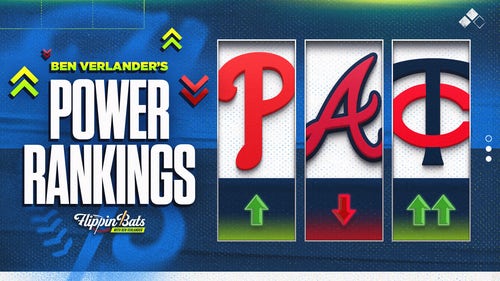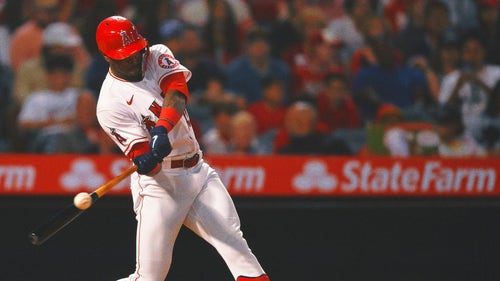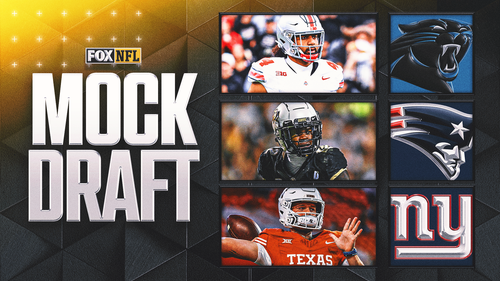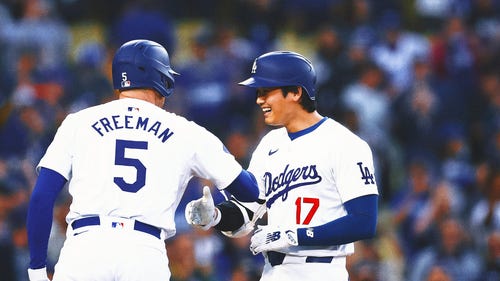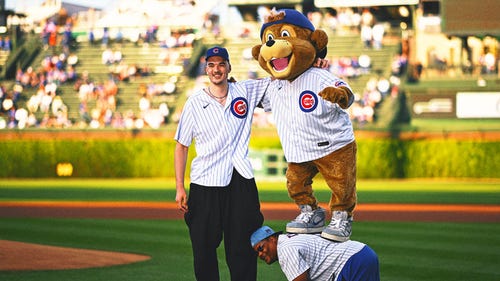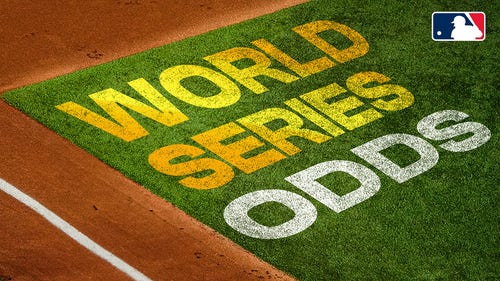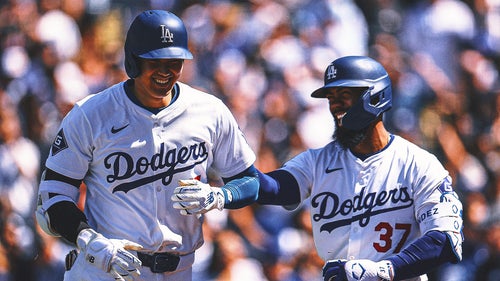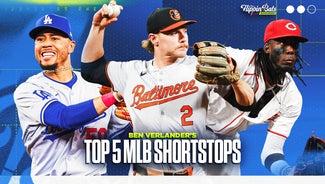
Blake Snell vs. Jordan Montgomery: Who's the better free-agent buy?
And then there were two.
What was once a pitching-heavy free-agent class is now an increasingly barren cupboard. The top arms have been gradually plucked away, one by one. The Aaron Nolas, Yoshinobu Yamamotos and Sonny Grays are off the board, as are the Kenta Maedas, Michael Wachas and Nick Martinezes (Nick Martini?).
All that remains at the tippity top are Jordan Montgomery and Blake Snell. Both pitchers are coming off phenomenal platform seasons, both are 31 years old and throw with their incorrect hand, and both are represented by Scott Boras, the game's most notorious agent.
Montgomery elevated his game in 2023 after a deadline trade from St. Louis to Texas. In eight of his 11 regular-season starts for the Rangers, the burly lefty from South Carolina hucked at least six innings and allowed two runs or fewer. A magnificent seven-inning, no-run performance against Tampa in Game 1 of the wild-card round got Texas rolling toward its first championship in franchise history. Montgomery stumbled in his only World Series outing (Texas' only loss of the series), but when the confetti fell, the former Yankee was hailed as a true postseason hero.
Snell finished the season with a shiny trophy, as well, only his year ended in early October rather than early November. The bleary-eyed southpaw captured the second Cy Young of his eight-year career by registering an MLB-low 2.25 ERA with 234 punchouts across 180 innings and 32 starts for the Padres. He also, quite impressively, led baseball in walks, becoming the first hurler since 1959 to win a Cy Young while simultaneously leading the league in walks.
The consensus around the sport is simple: Snell is better, with a higher upside, while Montgomery is a safer, more dependable option.
But what does that distinction actually mean? And is it true? Let's compare.
Ceiling
Watch Snell when he's on, and it's immediately obvious why hitters can't touch him. It's a visceral experience. The fastball averages 96 mph, the curveball is a knee-shaker, the changeup and slider would be anybody else's best secondary. Trying to hit against Snell must be an incredibly uncomfortable experience.
Montgomery's stuff is decidedly less eye-popping. If Snell's fastball is rocket fuel, Montgomery's sinker is the cheapest option at the gas station, though deception certainly helps the pitch play up. In fact, Montgomery's sinker, which he threw around 42% of the time last year, rated as one of the most valuable fastballs in the league last year by Statcast's run value metric. So, even though he's not your prototypical sinkerballer ground-ball machine, Montgomery is still very much a contact-dependent pitcher with league-average velocity who gets outs thanks to his sinker, command, sequencing, a very good curveball and the hair on his chinny chin chin.
The biggest distinction here is that while Montgomery, like most pitchers, is reliant on his fielders to scoop up a bunch of his outs, Snell is about as "defense-proof" as a pitcher can be. He's out on the hill to chuck fuel by people, not induce weak contact. Even with MLB seeking to incentivize a more contact-oriented ballgame, strikeouts are still king and always will be. Only a handful of humans can guarantee more strikeouts than Snell, which puts his ceiling higher than anything Montgomery can touch.
Outlook
Father Time comes for everybody, and for professional pitchers, fastball velocity is usually the first thing to go. The sport's history is littered with high-level hurlers who dominated in their 20s before losing the magic in their 30s once their fastball went flat. There are outliers, sure, and perhaps Snell will be throwing 97 until the ice caps melt, but chances are both of these dudes will need to learn to pitch with diminished velocity at one point or another.
And that's where the big concern comes in for Snell. Montgomery without velocity? Those pitchers exist, they survive, they endure. He'd basically be a taller version of José Quintana, who is a perfectly fine though unspectacular major-leaguer. But Snell without velocity? That's just a walk-machine who can no longer miss bats. Only Spencer Strider generated more swings and misses than Snell did in 2023. This is a pitcher who thrives by throwing the pill by people, so what happens when the well dries up? Will he learn to cut back on the walks? Will a team even care, hoping to capitalize on the remaining magic seasons he has left?
Durability
The best way to determine how healthy a pitcher will be is to see how healthy they've been. But even that is a game of chance. A meteor could blast the human race into oblivion tomorrow, Snell could break a thumb while gaming, Montgomery could slip on an errant banana, either's throwing arm ligaments could disintegrate on any pitch. The world, and baseball, is a weird and dangerous beast.
But a cursory look at their injury history reveals an obvious narrative: Montgomery has been healthier. Since he returned from Tommy John surgery at the end of 2019, Montgomery's only trip to the injured list was a 10-day COVID stint in 2021. He left an outing prematurely this past July with a hamstring issue, but didn't miss a start. Most importantly, the sturdy southpaw hasn't had any public arm issues since having his UCL stitched back together over four years ago. This is a man who posts.
Snell has been a more delicate bird. This past season was his first full season since 2017 without a journey to the IL. His medical history includes a procedure to remove loose bodies in his elbow, general shoulder fatigue, two adductor strains, a fractured toe and cramps. The two-time Cy Young winner has thrown 130 innings in a season just twice — his two Cy Young years. But the goateed hurler stayed fresh in 2023 and set a new career high in starts.
It's worth noting that Snell's reputation as a chuck-and-bounce guy — that is, he empties the tank for five innings before giving way to the ‘pen — is somewhat undeserved. During his time with the Rays, he was mostly beholden to the way Tampa did business and wasn't always entrusted to face an order the third time through. But in 2023, Snell averaged just under 5 2/3 innings a start, which, though far from elite, was right around league average.
In fact, he threw only eight fewer innings than Montgomery while making the same number of starts. Down the stretch in August and September, when the Padres needed all the wins they could get? Snell averaged just over six innings a start, the same as Montgomery during that stretch.
Put it all together and you have an ... interesting conversation. Perhaps every team in baseball would prefer Snell at an identical price, but there's an argument that Montgomery is the better value play. Snell has the better track record, the better numbers and two fancy trophies at home that will (deservedly) earn him tens of millions more than Montgomery.
As to where they end up, it's been reported that Montgomery is pushing for a reunion with Texas, but the Rangers have yet to meet Boras' steep asking price. Anything could happen, but Texas smells like the front-runner. Snell is more of a wild card. There were Yankees rumors, but then they signed Marcus Stroman. The Giants were interested, but might tap out now that Jordan Hicks is in the fold. Boras holds the keys to the market, as is often the case this time of the year. Where they land, though, isn't as fascinating as how they age.
Jake Mintz, the louder half of @CespedesBBQ is a baseball writer for FOX Sports. He played college baseball, poorly at first, then very well, very briefly. Jake lives in New York City where he coaches Little League and rides his bike, sometimes at the same time. Follow him on Twitter at @Jake_Mintz.






































































































































